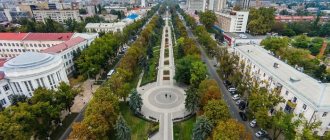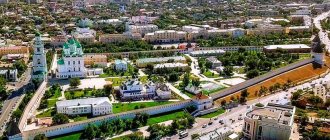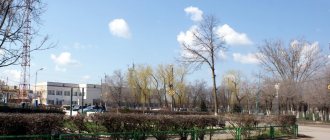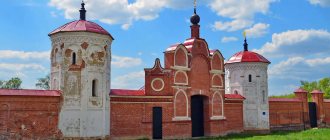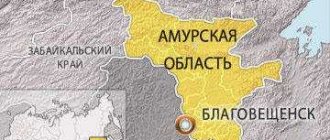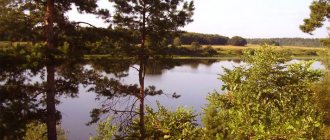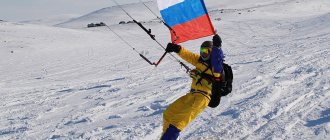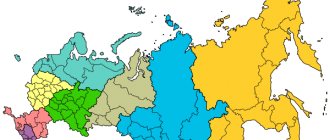What holiday is it today?
February 10, 2022, Thursday
Today are holidays, events: Diplomat's Day Tomorrow: World Sick Day Discovery of insulin
Today is the Orthodox holiday: St. Ephraim the Syrian. Venerable Ephraim of Novotorzhsky. Venerable Ephraim of Pechersk, Bishop of Pereyaslavl. Venerable Theodosius of Totem, Spasosumorin of the monastery, leader and founder... Tomorrow: Transfer of the relics of the holy martyr Ignatius the God-Bearer. Saints Gerasim, Pitirim, Jonah, bishops of Great Perm, Ustva...
Today is a national holiday: Ephraim's Day... Tomorrow: Lawrence's Day
Seasons
Seasons, four periods of the year (spring, summer, autumn and winter) characterized by certain average temperatures. The period during which the Sun passes through one of these sectors is called the season. Spring in the Northern Hemisphere and autumn in the Southern Hemisphere begin when the Sun passes through the initial circle of declination and its right ascension is 0° (vernal equinox). Summer in the Northern Hemisphere and winter in the Southern Hemisphere occur when the sun's right ascension is 90° (summer solstice). Autumn in the Northern Hemisphere and spring in the Southern Hemisphere begin when the sun's right ascension is 180° (autumnal equinox). The beginning of winter in the Northern Hemisphere and summer in the Southern Hemisphere is considered to be the winter solstice, when the direct ascension of the Sun is 270°... Next: Seasons. Russian folk calendar. Monthly words...
Map of the Astrakhan region from satellite
The area of the Astrakhan region is 42,024 sq. km. It borders on Kazakhstan, Kalmykia and the Volgograd region, and is part of the Southern Federal District. The population is 1,013,840 people with an average residential density of 20 h/km², more than 66% are urban residents. The climate is continental, arid, with little snow, fairly warm winters and hot summers. In July, the air temperature often rises to +45 °C. The region is located on the Caspian lowland. Here the Volga River, forming a complex delta with numerous branches, flows into the Caspian Sea.
The satellite map of the Astrakhan region is a high-resolution satellite photo of the Astrakhan region. Use + and – in the left corner of the map to enlarge the satellite image of the Astrakhan region.
Astrakhan region. Satellite view
The satellite map of the Astrakhan region can be viewed both in schematic map mode and in satellite view mode by switching viewing modes on the right side of the map.
The administrative center of the region is the city of Astrakhan with a population of 525,387 people. The largest cities: Akhtubinsk, Kamyzyak, Znamensk, Narimanov, Kharabali. The main sectors of the economy are represented by mechanical engineering, food and fish processing industries, electric power, and shipbuilding. Areas of agriculture: meat and dairy farming, melon growing, vegetable growing, rice growing.
Astrakhan. Satellite map online (This map can be controlled using the mouse, as well as signs in the left corner of the map)
The zonal structure of the areas is represented by desert, semi-desert, ilmen-hilly and intrazonal landscapes. More than 9,000 species of animals and birds make up the fauna of the region. Main natural resources: oil, natural gas, gypsum, rock salt. Largest bodies of water: Caspian Sea and Volga River. The number of watercourses is about 900 units, freshwater and salt water bodies in the Astrakhan region are about 1000 units. Valuable commercial fish go to the delta to spawn: sturgeon, beluga, stellate sturgeon; in total, more than 50 species of fish live in the Volga and Caspian Sea. Among the birds that live here are egrets, cormorants, pelicans, and many others. In order to protect the unique flora and fauna of the region, the Astrakhan Nature Reserve was created. There are 35 natural monuments, 3 biological reserves and 2 state natural reserves in the region.
Folk calendar about every day
Every day one season always replaces another and this determines a person’s way of life. In connection with this, a folk calendar was formed in which there were practically no nameless, unmarked days. Every day was special, had its own purpose. All this was determined by climate conditions and astrological phenomena.
A calendar is a system for counting periods of time. The first calendars arose a long time ago, in ancient times, because there was a need to measure time. The word calendar comes from the Latin words caleo - to proclaim and calendarium - debt book. This is due to the fact that in Ancient Rome the beginning of each month was especially proclaimed, and because it was customary to pay debts on the first day of the month. Different peoples counted time differently. Some calendars are based on the changing phases of the moon - lunar calendars; in others - the change of seasons - sunny; in others, the length of the year was coordinated with the change of seasons, and the counting of months was associated with the phases of the Moon. Such calendars are called lunisolar.
In Rus', the calendar was called a monthly calendar. Every day, the month book covered the entire year of peasant life, “describing” day by day, month after month, where each day had its own holidays or weekdays, customs and superstitions, traditions and rituals, natural signs and phenomena. The cyclical nature of the calendar is reminiscent of human life, where spring is youth, summer is heyday, autumn is the time of harvesting fruits (it’s good if there are some, otherwise you can live your life without collecting fruits), winter is the time of wisdom and peace. This cyclicality and rhythm determined the way of life of the farmer. The folk calendar was an agricultural calendar, which was reflected in the names of the months, folk signs, rituals and customs. Even the determination of the timing and duration of the seasons is associated with real climatic conditions. Hence the discrepancy between the names of the months in different areas... Next: Folk calendar...
Economy and industry of the Astrakhan region
The region has a well-developed industry. The main ones are shipbuilding, mechanical engineering, food and energy sectors. In addition, the Astrakhan region is a region where oil and gas production is carried out.
Thanks to the presence of shipping, railway, and road routes, the region's economy is developing successfully. Manufactured products are sent to all regions of the country and beyond. The “web” of economically significant transport routes of the Astrakhan region can be seen in sufficient detail on a satellite map. The length of the railway lines is 849 km, and the shipping lines are 1440 km.
Akhtyubinsky district of the Astrakhan region is one of the largest military-defense centers in the country. There is a military training ground here, as well as military industry enterprises.
Yandex maps of the Astrakhan region will help you get acquainted in absentia with one of the developed industrial, economic, tourist and cultural centers of Russia. They make it possible to estimate the size of the region, its transport routes, and the location of cities and villages. In addition, such an assistant will be indispensable when traveling around the country, because the map will always help you quickly determine locations and set the required route.
Fishing calendar for every day
The fishing calendar should not be taken as an absolutely indisputable truth. Fish biting is greatly influenced by a whole range of natural factors, as well as the influence on the nature of man himself. You must not forget that the fish’s bite depends and is determined not only by the calendar dates and biological cycles of their life, reflected in the calendar, but also, no less, by the state of their habitat; the bite also depends on weather conditions: air and water temperatures, cloudiness, wind direction and strength, etc... Next: Fishing calendar...
Astrakhan region
The Astrakhan region is a subject of the Russian Federation. The region belongs to the Southern Federal District. The administrative center is the city of Astrakhan. The region is located in the southeast of the East European Plain within the Caspian Lowland, in temperate latitudes, in the zone of deserts and semi-deserts. In the east, Kazakhstan adjoins the region, and the sea borders with several states: Iran, Azerbaijan and Turkmenistan. On other sides, the region borders on the Volgograd region and the Republic of Kalmykia. The area is 49,024 sq km, the population as of 2016 is 1 million people. The climate of the region is sharply continental, arid, the weather is fickle and unstable.
Historically, the Astrakhan region is home to Tatars, Nogais and Turkmens, but currently the majority of the region's population is Russian. The region has the largest Kazakh community in the entire territory of Russia. However, residents of the region take care of their cultural heritage. Astrakhan is famous for its Kremlin - a unique architectural ensemble of the 16th century, whose walls and towers were made of Golden Horde stone. The Astrakhan State United Historical and Archival Museum, founded in 1837, may also be of interest.
The official history of the region dates back to the Tatar settlement of the 13th century mentioned in the chronicles. Nevertheless, excavations have been ongoing for many years and an ancient city of the 9th century with a large number of preserved household items was found and excavated on the territory of the Kamyzyak region. The region is rich not only in its traditions and heritage, but also in large reserves, game reserves and hunting grounds. Here you can find a huge number of bird species listed in the Red Book. Among the thirty state natural monuments, Lake Ilmen Tinaki, rich in healing mud, stands out, where a balneological resort has been created, famous throughout Russia.
Of particular importance is the Volga-Akhtuba floodplain, which turns into a vast delta, whose waters serve as a spawning ground for commercial fish. In addition to fish, the Volga delta is not only the territory of permanent “residence” for many birds, but also a place where migratory birds stop during the migration period. It offers a large number of recreation centers, health resorts, excursion programs and special fishing or hunting tours. Almost all of them have created conditions for relaxation: visitors will find equipped beaches, verandas for picnics and numerous cafes.
Orthodox calendar about every day
Orthodox calendar: Orthodox, Church and Christian holidays.
The church year is an alternation of weekdays and holidays. On weekdays, a person is called to work “by the sweat of his brow to earn his bread.” Holidays are given in order to feel liberation, to rise above the bustle and routine of the world, to feel involved in the highest of worlds, “where there are no illnesses, sorrows and sighs, but endless life.” Since ancient times, holiday cycles have been associated with the seasons. The pagans associated them with the worship of the forces of nature, the cult of which in the Old Testament was replaced by gratitude to the Creator for the universe. And although the connection between holidays and the seasons has not completely lost its power, since God is present in everything, in the plant and animal world, in human works, it nevertheless faded into the background, giving way to a spiritual foundation built on the Sacred Scriptures. The history of Orthodox holidays dates back to the times of the Old Testament. Each of the Orthodox holidays is dedicated to the remembrance of the most important events in the life of Jesus Christ and the Mother of God, as well as the memory of saints... Next: Orthodox calendar...
Russian folk calendar for every day
The word “sign” comes from the word “notice”, i.e. observe. As a result of observing what happens around a person every day, he accumulates life experience. This knowledge was passed down from generation to generation, carefully preserved and people trusted it as a sacred book. Many signs have come to us from the depths of centuries without losing their knowledge. Each of us is free to choose: to dismiss all this as an absurd superstition or to take a closer look at the signs and take the centuries-old experience of generations more seriously. Most of us, when taking exams, ask them to scold them, boasting about some kind of good fortune or luck, spit so as not to jinx them or knock on wood, take a detour if a black cat crossed the road, are afraid of the number 13 and much more. And who among us does not have lucky things, numbers? Who has never resorted to the help of fate at least once in their life, who has not believed in secrets? It’s as if everything connected with signs is hidden somewhere deep in our subconscious. Often we remember them mechanically, unconsciously, or just as a joke. But, undoubtedly, the signs contain a lot of accurate knowledge and practical wisdom of our ancestors. They cover all the characteristic, often difficult to perceive, natural phenomena. Signs have preserved a lot of what was in old folk holidays and customs; they help predict the weather, grow crops... Next: Folk signs...
Cities and villages of the Astrakhan region on the map
Astrakhan has an “air gate”. Astrakhan International Airport receives flights from all over Russia and abroad. On the map of the Astrakhan region with cities and villages you can see that the Airport is located in the suburbs of Astrakhan.
There is also a railway station in Astrakhan, which welcomes guests and residents of the city or takes them on a journey through the central, eastern and southern parts of the country. On the map of the Astrakhan region you can see in detail the direction of the railway tracks.
There are many small settlements and large villages located in the region. The desert and semi-desert plains of the region are used largely as pastures for livestock. In addition to farming and cattle breeding, the population of the region is actively developing fishing.
National traditions are being developed and carefully preserved in the Astrakhan region. The second largest people in the region are the Kazakhs, who have cultural centers in villages and cities, and the national language is taught in schools. A map of the Astrakhan region with cities in good quality allows you to see the locations of Kazakh cultural centers, as well as Orthodox churches, many of which were built more than a century ago.
Holiday calendar, dates and events of the year
All state and professional holidays in Russia, including significant World and International holidays, and other equally interesting holidays and events about every day.
The holiday has always kept pace with the history of mankind. Social time can be divided into three types: everyday life (weekdays), weekends and holidays. Everyday life is a series of practices repeated day after day and every day (work). Weekends are regular breaks from the rush of everyday life. It is believed that on weekends a person should restore his strength after working days. Day off, non-working day. A holiday is a day of celebration established in honor or in memory of someone or something. A day or series of days celebrated by the church in memory of a religious event or saint... Next: Calendar...
Prayer book, Orthodox prayers for every day
Prayer is the most powerful means for healing all illnesses - both physical and mental. Prayers can be laudatory or grateful, petitionary and repentant. If we have offended God, sinned, we must ask Him for forgiveness, that is, repent. Such prayers are called repentant prayers. If everything is fine with us, if we and our loved ones are healthy and prosperous, if we have a place to live, something to wear, something to eat, we must glorify and thank God for this. Such prayers are called praise or thanksgiving. If some misfortune, illness, trouble or need happens, you need to ask God for help. Such prayers are called petitionary... Next: Orthodox prayers...
Zodiac, astrological, eastern calendar. Zodiac signs
In ancient times, to establish the calendar, priests used knowledge of the positions of all the planets. Before the reform of Peter 1, the New Year was celebrated on the Day of the Autumn Equinox. On this day, according to ancient legend, the most peaceful treaty was concluded between the Great Race (ancient Slavs) and the Great Dragon (ancient Chinese) and it was approximately 7518 years ago... For the ancient Slavs, the calendar month corresponded to the lunar cycle from new moon to new moon, taking into account such Thus, the relationship of the entire annual cycle with astronomical and natural phenomena. There was no coherent calendar system. The main natural phenomena are still considered to this day to be the days of the solar equinox and solstice - the Slavic holidays Maslenitsa, Kupala, Ovsen and Kolyada. But during the time of Peter 1, all ancient Slavic calendars were abolished and a new Western European calendar from the Nativity of Christ (Julian calendar) was introduced, while the beginning of the calendar was moved to January 1. The Julian calendar (old style) did not take leap days into account and accumulated one extra day every 128 years. After the October Revolution in 1918, the Gregorian calendar (new style) was introduced in Russia, according to which an amendment of 13 days was introduced. The calendar of the ancient Slavs was based on two planets: the Sun and the Moon. And now they don’t use anything at all. The calendar has become static. There is no such thing as the calendar, it turns out, resting on some planet. Nobody even knows about it. There are just some standard numbers, there are months and holidays. The calendar is based on the Sun and Moon. Why is this so? Because these two luminaries influence the Earth. The Earth revolves around the Sun, and the Moon revolves around the Earth. And these two luminaries create the atmosphere on the planet. From here the calendar is built... Next: Astrological calendar...
Map of the Astrakhan region with cities, districts and villages
| 1. Astrakhan | 5. Nachalovo village (Privolzhsky district) | 9. Ilyinka district (Ikryaninsky district) | 13. Volodarsky district (Volodarsky district) |
| 2. Krasny Yar village (Krasnoyarsk region) | 6. Cherny Yar s. (Chernoyarsk district) | 10. Verkhniy Baskunchak r.p. (Akhtubinsky district) | 14. Ikryanoye village (Ikryaninsky district) |
| 3. Kirovsky town (Kamyzyaksky district) | 7. Kharabali city (Kharabali district) | 11. Akhtubinsk city (Akhtubinsky district) | 15. Enotaevka village (Enotaevsky district) |
| 4. Liman rp (Limansky district) | 8. Volga-Caspian town (Kamyzyaksky district) | 12. Nizhny Baskunchak r.p. (Akhtubinsky district) | 16. Kamyzyak city (Kamyzyak district) |
Satellite map of the Astrakhan region
Switching between the satellite map of the Astrakhan region and the schematic one is done in the lower left corner of the interactive map.
Astrakhan region - Wikipedia:
Date of formation of the Astrakhan region:
December 27, 1943
Population of the Astrakhan region:
997,778 people.
(January 1, 2022) Telephone code of the Astrakhan region:
851
Area of the Astrakhan region:
44,100 km²
Vehicle code of the Astrakhan region:
30
Districts of the Astrakhan region:
Akhtubinsky • Volodarsky • Enotaevsky • Ikryaninsky • Kamyzyaksky • Krasnoyarsky • Limansky • Narimanovsky • Privolzhsky • Kharabalinsky • Chernoyarsky.
Cities of the Astrakhan region - list of cities in alphabetical order:
Population of cities in the Astrakhan region in 2017.
City of Astrakhan
founded in 1558.
The population of the city is 532,504 people. The city of Akhtubinsk
was founded in 1793.
The population of the city is 37883 people. The city of Znamensk
was founded in 1948.
The population of the city is 26934 people. The city of Kamyzyak
was founded in 1560.
The population of the city is 16,077 people. The city of Narimanov
was founded in 1963.
The population of the city is 11,118 people. The city of Kharabali
was founded in 1789. The population of the city is 18,031 people.
Astrakhan region
is located in southern Russia, where the Volga River flows into the Caspian Sea, forming one of the largest river deltas in Europe. Historically, Sarai-Batu, the original capital of the Golden Horde, was located on this territory.
The administrative center of the Astrakhan region is the city of Astrakhan
, which originated as a trading center for the Golden Horde and was annexed to Russia by Ivan the Terrible in the mid-16th century. Today the city is famous for its white Kremlin - the southernmost Kremlin in all of Russia.
The best time to visit the Astrakhan region is July and August, when lotuses bloom in the Volga delta and the famous Astrakhan watermelons are harvested. The region is also associated with black caviar from the Caspian Sea.
City of Astrakhan
was founded in the second half of the 13th century. Being located near the mouth of the Volga River, it quickly became an important trading city, and in the mid-15th century it became the capital of the Astrakhan Khanate, the successor state of the Golden Horde. It became part of Russia under Ivan the Terrible, who was responsible for founding the city's most famous landmark, the Astrakhan Kremlin. Astrakhan was named the Historical City of Russia.
Climate of the Astrakhan region
– sharply continental, characterized by high temperatures in summer and low temperatures in winter. Temperatures in summer - from +25 to +28 C. Temperatures in winter - -5...-9 C.
Most attractions in the city of Astrakhan
, whose history lasts 450 years. The buildings of the city date back to the 16th-20th centuries. The main attraction of the city is the Astrakhan Kremlin, built in the 16th century, the walls of which are still preserved. The Astrakhan region is also famous for its natural monument - Lake Baskunchak, the main deposit of table salt.
Dream books online, interpretation of dreams
A dream book is nothing more than an interpreter of dreams and dreams, a translator of dreams. Since ancient times, people have been using dream books; dreams have always been given great importance, and people have often noticed the prophetic properties of some dreams. The dream book can become your faithful assistant every day and throughout your life, thanks to the dream interpreter you can always make the right decisions, the dream book will help you resist temptations in time, and will warn you against wrong steps and frivolous actions. Further…
